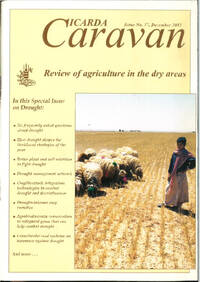Caravan 17: Review of agriculture in dry areas

Authors:
This issue of Caravan presents the facts about drought, including efforts to more accurately predict its occurrence and severity. Agroclimatologists, for example, are making use of satellite imagery and geographical information systems in their research on combating drought and desertification. Plant breeders, on the other hand, are combining the traditional methods of crossing and selection with the use of biotechnology tools to develop more drought-tolerant crop varieties. Water-use efficiency is an obvious goal of anyone working in dryland agriculture. We must recognize that water, not land, is the principal factor limiting production, and production systems must be adjusted accordingly. This shift in approach has spawned research into supplementary irrigation and deficit irrigation. The former involves irrigating to maximize production per unit of water; the latter, giving a crop just enough water to produce a satisfactory crop. The water saved can be used to cultivate new land.
